Title and statement of responsibility area
Title proper
The British Columbia Sugar Refining Company fonds
General material designation
- Multiple media
Parallel title
Other title information
Title statements of responsibility
Title notes
- Source of title proper: Title is based on the legal name of the operating company rather than the holding company.
Level of description
Fonds
Reference code
Edition area
Edition statement
Edition statement of responsibility
Class of material specific details area
Statement of scale (cartographic)
Statement of projection (cartographic)
Statement of coordinates (cartographic)
Statement of scale (architectural)
Issuing jurisdiction and denomination (philatelic)
Dates of creation area
Date(s)
-
1657-2011 (predominant 1890-1999) (Creation)
Physical description area
Physical description
35.33 m textual records and other materials
Publisher's series area
Title proper of publisher's series
Parallel titles of publisher's series
Other title information of publisher's series
Statement of responsibility relating to publisher's series
Numbering within publisher's series
Note on publisher's series
Archival description area
Name of creator
Administrative history
The British Columbia Sugar Refining Company, Limited (commonly referred to as BC Sugar) was founded 1890 by Benjamin Tingley (B.T.) Rogers, an American whose family had a history in the sugar refining trade. The Company was ended in 2008, when it was merged with its sister company, Lantic, to form Lantic, Inc.
The British Columbia Sugar Refining Company, Limited was initially financed by a group of investors dominated by American sugar interests, eastern Canadian businessmen, businessmen with Canadian Pacific Railways connections, and a few local businessmen, including the then-mayor of Vancouver, David Oppenheimer. The facility was built on land given to the Company by the City. The Company received a $30,000 grant from the City, half of which was realised as the cost of the land purchased by the City and given to the Company for their refinery.
The Company operated as a closely held corporation for its first nine years. It is not clear how investors outside the friends and family of the initial investors were able to purchase shares in the Company between the initial three tranches of stock released in 1890 and 1891 and the time that the Company was taken entirely private in 1899.
In 1899, a holding company, BC Sugar Refinery Company, Limited, was formed for the purpose of holding shares in The British Columbia Sugar Refining Company, Limited. From this point on, the Company was referred to as the “operating company” to distinguish it from BC Sugar Refinery Company, Limited (thereafter referred to as the “holding company”).
Existing shareholders in the operating company at the time of the 1899 reorganisation were given two shares in the holding company in exchange for each share that they held in the 1890 operating company. The operating company then issued new shares which were purchased by the holding company; in this way the operating company was entirely privatised. The only shares in the operating company that were not owned by the holding company after 1899 were a small number of shares owned by members of the Board of the operating company. Board members were required by law to be shareholders, so a small number of shares were periodically issued to those people chosen to sit on the operating company’s Board.
In an effort to address fears that the British Columbia government might designate the operating company a Public Utility (and thereby fall under strict regulation and price controls), both the holding and operating companies were wound up in 1920 and re-created as Dominion-registered companies. This change placed the companies under federal, rather than provincial, jurisdiction. The ownership and operations of the companies were unchanged at that time as shares were swapped for shares in the newly-constituted companies of the same name, and assets of both companies were transferred to the respective new companies. The companies continued the same set of books for the entire fiscal year ending March 31, 1921; in the eyes of management the new companies formed in 1920 were a seamless continuation even though they were legally separate entities.
From the beginning of its operations, The British Columbia Sugar Refining Company, Limited was tightly controlled by the Rogers family. Family members, friends, and relatives such as the Anguses (the extended family of Mary Isabella Rogers, B.T. Rogers’ wife) filled the Board and many executive positions. Except for the period 1920 to 1930, between the death of Blythe Rogers (eldest son of B.T., who had succeeded him to the Presidency in 1918) and the retirement of J.F.W. Johnson, all Presidents of the operating company for its first 98 years were members of the Rogers family. All four sons of B.T. Rogers were appointed to the Board at early ages and moved into the Presidency in succession. After the retirement of Forrest Rogers (youngest son of B.T. Rogers) from the Presidency in 1973, B.T.’s grandson Peter Cherniavsky became President.
The Company’s principal operation since its foundation was the sugar refinery located on Vancouver’s waterfront, where it has processed imported raw sugar into a range of products since 1891. The Company was able to leverage its political connections and connections to the executive of Canadian Pacific Railways, through W.C. VanHorne, one of the Company’s original investors, to obtain favourable freight rates into the Prairie provinces. This allowed the Company to expand its sales throughout western Canada in the early years of the 20th century. This expansion of interests eastward lead to the creation of two distribution subsidiaries in Alberta and Saskatchewan (required by each province’s Companies Act) in the 1920s, the acquisition of the Alberta-based Canadian Sugar Factories, Limited in 1931 and Manitoba Sugar Company in 1955-56.In 1944, the Company purchased Buckerfields’ beet seed operations in order to secure supplies of seed for its sugar beet operations in Alberta.
Over the course of its life the Company has invested in or created various ancillary operations in the sugar trade. As well as the companies mentioned above, the Company’s subsidiaries have included the Vancouver-Fiji Sugar Company, Limited, and the Ozama Sugar Plantation in the Dominican Republic. For more information on the Company’s subsidiary firms, refer to their individual Authority entries linked below.
Through its history the Company has also invested in a number of other companies, such as Belkin Packaging, Western Plywood (Weldwood Canada), Anderson Oil & Gas Company/Anderson Exploration, Chatterton Petrochemical Corp., and Kalama Chemicals.
In the 1990s, The British Columbia Sugar Refining Company, Limited began its relationship with Lantic Sugar Limited. In 1990, BC Sugar entered into an agreement with the owners of Lantic to purchase 50% of Lantic and its American subsidiary, Refined Sugars, Inc. The remaining 50% of Lantic was purchased in 1992. The three companies (BC Sugar, Lantic, and Refined Sugars) continued to operate in their individual markets under their existing brand names. In 1992, BC Sugar sold off its remaining oil, gas and petrochemical holdings to finance its Lantic purchase and focus its investments on core sugar refining and sales operations. At this time, Lantic was a wholly-owned subsidiary of The British Columbia Sugar Refining Company, Limited.
In 1997, the holding company, BC Sugar Refinery Company, Limited, was taken over by a consortium consisting of Belcorp and Onex Corp. A significant reorganisation of both the operating and holding companies after the takeover resulted in the breakup of the assets of the operating company and dissolution and replacement of the holding company. Refined Sugars was sold off; Lantic Sugar Limited was spun off from the BC Sugar operating company and continued under direct ownership of the consortium. The BC Sugar operating company was renamed Rogers Sugar Inc., and continued as a privately-held company owned by the new holding company, Rogers Sugar Income Trust, which replaced BC Sugar Refinery Company.
In 2008, another corporate reorganisation occurred. Rogers Sugar Inc. ceased to exist as an independent operating company. It was merged with Lantic Sugar Limited to form a new operating company: Lantic Inc., which at the time was owned by the Rogers Sugar Income Trust. In 2011, the Rogers Sugar Income Trust was wound up and reformed as a conventional corporation, Rogers Sugar Inc.
The company’s western Canadian operations still function under the Rogers Sugar trade name.
Custodial history
Most of the records in the fonds were in the custody of the BC Sugar Museum, a unit of the Company located at the Vancouver refinery, before donation to the Archives. In many cases, the original administrative and operational context of the records was lost once in the custody of the Museum.
Scope and content
Fonds consists of records which document a wide range of functions and activities of The British Columbia Sugar Refining Company, Limited, its holding company, BC Sugar Refinery, Limited, and various subsidiaries. The functions and activities include: corporate governance and capitalization; shareholder relations; acquisition, management and oversight of subsidiaries and other investments; liaison with stakeholders, including other sugar manufacturers; research on sugar beet production and sugar refining; international sugar trading; development and maintenance of production facilities; promotion of sugar use by consumers; and financial, human resources, and other administrative activities that supported the operations of the Company.
The records include correspondence, reports, meeting minutes, a variety of types of financial records, laboratory analysis and refining records, photographs of staff and facilities, marketing artwork, publications, and technical and architectural plans of various refineries and mills. Much of the audio visual material documents the sugar industry, with emphasis on refineries and sugar plantations owned by BC Sugar and its subsidiaries.
Notes area
Physical condition
Immediate source of acquisition
Records were acquired from Lantic Inc., successor company to The British Columbia Sugar Refining Company, Limited.
Arrangement
The most recent active custodian of these records was the BC Sugar Museum (1976-2011). For most records it is not possible to discern their original order, as they were removed from their original context of creation by the Museum, which rarely captured that information. Wherever it is possible to determine the records' original context, this is reflected in the arrangement of the records.
Language of material
Script of material
Location of originals
Availability of other formats
Restrictions on access
Access to some records is restricted; see series descriptions for more information on access restrictions.
Terms governing use, reproduction, and publication
Finding aids
Associated materials
The Mrs. B.T. Rogers collection AM198 and the Rogers family fonds AM1368 also contain material on the Rogers and Angus families, many of whose members served in the management or executive of the Company.
Accruals
No further accruals expected.
General note
This fonds is being processed and made available in stages. While the entire fonds is in the custody of the Archives, the descriptions of the fonds will be periodically added to and revised to reflect subsequent releases of records after their processing is completed.
Physical description
Fonds also contains: 4334 photographs, 7 photo albums (including 678 photographs), 93 technical drawings, 68 architectural drawings, 42 maps, 17 posters, 8 paintings, 6 prints, 3 drawings, 8 page mock-ups, 7 film reels, 3 video reels, 2 videocassettes, 1 audio reel, 4 microfilm reels (textual records), 4 plaques, 4 cotton bags, 1 ribbon, 1 cloth badge, 1 company seal, 1 brass plate, 1 license plate, and 1 bottle of machine oil.

![Sugar refining engravings from Diderot. Pl. I, [plate 1] OEconomie Rustique, Sucrerie](/uploads/r/null/1/7/1/1719fc7dc9ea204d8831ec96bec12051803be7f92ef672eec2d3e26e3c85a5c7/f8b9c246-ea0d-4c9b-b020-11bc479dcb6b-2011-092_142.jpg)
![Sugar refining engravings from Diderot. Pl. II, [plate 2] OEconomie Rustique, Sucrerie](/uploads/r/null/8/5/f/85fc735737a5be5447e16d7f61a2fe47745d184eba53b20ddc3bbb391fe2507c/099f1aaf-049e-49bc-880c-c90888f465e3-2011-092_142.jpg)
![Sugar refining engravings from Diderot. Pl. IV, [plate 4] OEconomie Rustique, Sucrerie](/uploads/r/null/6/e/5/6e5e78cf81f72a0bd1aa2b38415f43019455b1bb8d50dec329c562121905db12/ed9193e4-7ef4-4394-b8f8-a97f9bf684cc-2011-092_142.jpg)
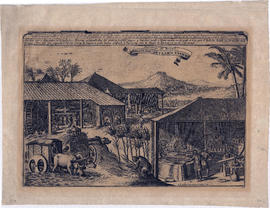
![Sugar refining engravings from Diderot. Pl. VI, [plate 6] OEconomie Rustique, Affinerie des Sucres](/uploads/r/null/6/d/d/6ddfbb426ea603f8333a8f65bed9422d353c1920a2bdadc48b05996b161ad9b4/b358e166-ced5-4060-967f-728c70a6eda0-2011-092_142.jpg)





![Front view of works [Vancouver refinery]](/uploads/r/null/9/1/c/91ccec65b5a7948e5ec53f4ad03b96df2d3bbaa5a50e2debac155a94860e7561/62880f5f-ebc1-4cb5-b5ad-ec50b8fb67e4-2011-092_142.jpg)


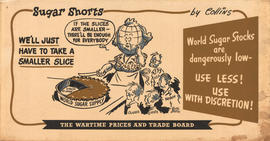



![Raymond Alberta C.S.F., V[IP or R] Snow [?]](/uploads/r/null/3/d/2/3d2961aebcd8fae5e8d227ca03e360dcd3eb1b1a6e1bab71c8034e023691a92c/d2ab0a0f-71a4-4c38-a050-78ca100b2206-2011-092_142.jpg)

![Golden Syrup ad [advertisement] quick energy for young and old](/uploads/r/null/5/4/7/5473a325b2346239bb9f69ebb1492e4f692c28bbb768b6cf542b85f319ba6095/b9221c04-9deb-4eed-a3f9-a4419634f9a6-2011-092_142.jpg)




![Picture Butte Factory [aerial photograph]](/uploads/r/null/2/2/1/221846542f07a55a7d3eb3378842cb245f4a772a4fdb1010329fca16cbfc25dd/f7a47e8a-abd4-4876-8c91-f1676f5025a1-2011-092_142.jpg)

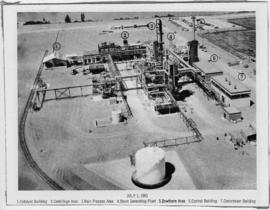

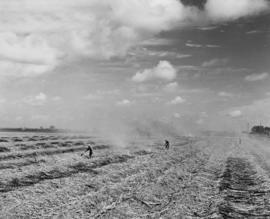
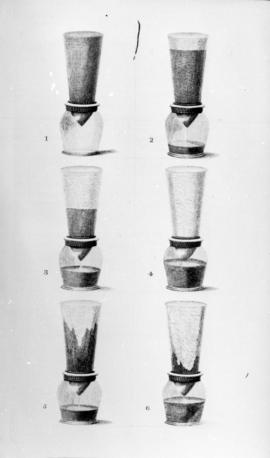
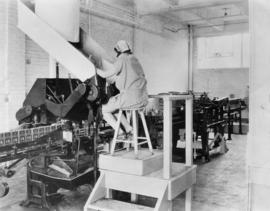

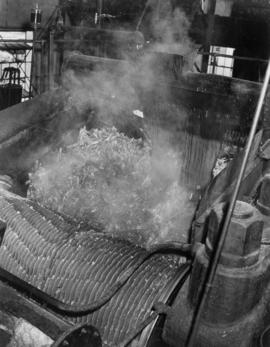


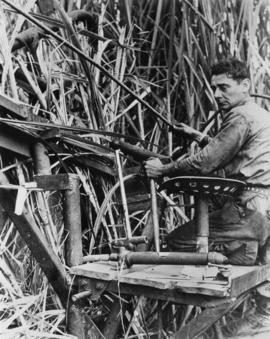

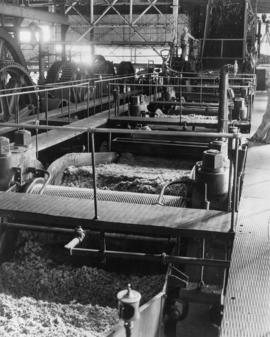

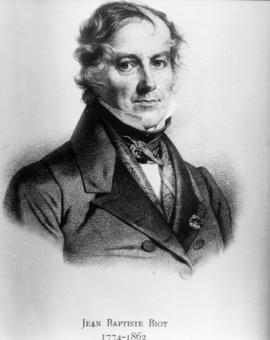

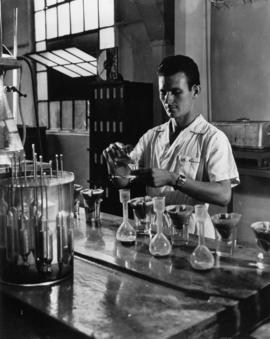
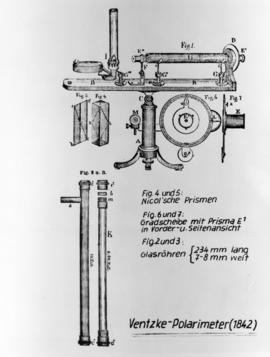
![Drawing of multiple effet [evaporator]](/uploads/r/null/d/2/d/d2de8de948dc4027a5901f51f9eda6f0d299d6b035966a0e35e8ff19e77d9f30/c9e77d81-99f9-4f2f-8f4c-95147c356731-2011-092_142.jpg)
![[Norbert] Rilleux](/uploads/r/null/8/c/0/8c02f75bf8fe73da9682061c1b7e1970e3ca18861ad9f4c45f5022f16c8e00bb/150c7928-6175-4e69-a736-a7c3ecee98a5-2011-092_142.jpg)




